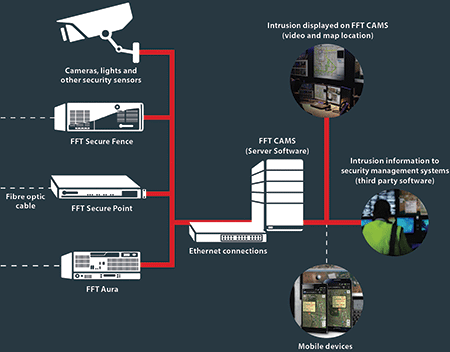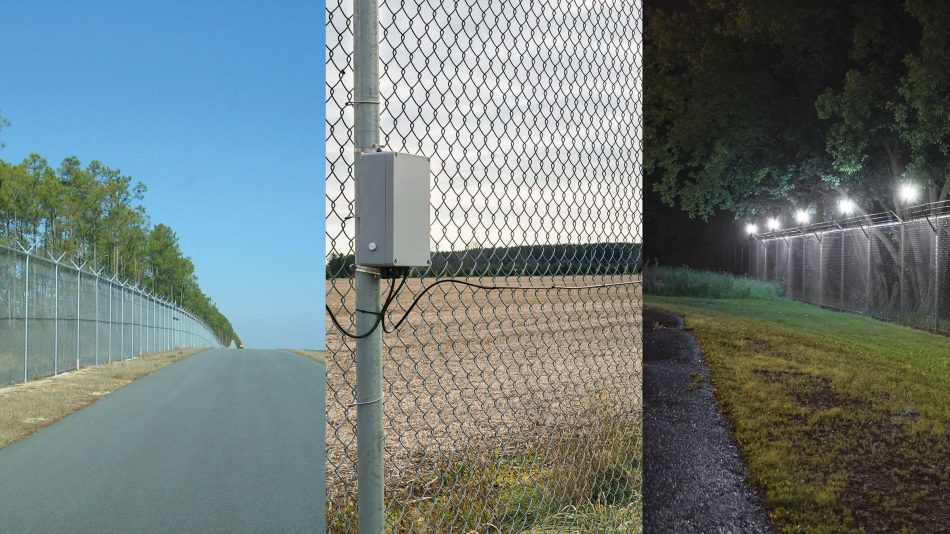Why Fiber Optic Security Systems Are the Future of Protection
The shift to fiber optic security systems marks a significant development in the world of security, driven by their remarkable information transmission capabilities and resilience to exterior interferences. These systems not only help with faster and more trustworthy communication yet also present an affordable service with decreased maintenance demands. As the landscape of safety and security progresses together with arising innovations such as AI and IoT, the potential for fiber optics to improve and redefine safety frameworks becomes significantly obvious. The ramifications of these developments increase essential concerns about the future of security measures and their efficiency in an ever-changing setting.
Advantages of Fiber Optic Systems
Among the primary advantages of fiber optic systems is their exceptional bandwidth ability, which assists in the transmission of large volumes of data over fars away without significant loss. This characteristic is particularly helpful for protection applications that need the constant tracking and transfer of high-definition video feeds, sensor data, and other important details. Optical fiber can fit the growing demands of modern-day protection systems, guaranteeing that data stays undamaged and trustworthy.
Furthermore, fiber optic cables are much less prone to electro-magnetic disturbance, which can be a considerable problem in atmospheres with numerous electronic tools. This resistance enhances the stability of the data being transferred, thus decreasing the risk of information breaches or system failings. Fiber optic systems are naturally much more safe and secure than standard copper wires, as tapping right into a fiber optic line without detection is exceptionally challenging.
The durability of fiber optic cable televisions additionally adds to their charm. They are resistant to environmental variables such as moisture and temperature level variations, reducing upkeep expenses and raising system longevity. Generally, these benefits placement fiber optic systems as a robust and effective choice for modern safety facilities, making certain reputable and protected information transmission.
Improved Information Transmission Rate

The ability to transfer huge amounts of information promptly facilitates the seamless integration of high-definition video feeds and advanced analytics. Safety and security systems can currently refine and assess information in real-time, improving reaction times and situational understanding. Furthermore, fiber optic connections sustain longer transmission ranges without destruction of signal top quality, making them ideal for expansive safety and security networks.
The enhanced speed of fiber optic systems not only enhances the efficiency of security operations but additionally minimizes latency. This is specifically crucial in essential scenarios where prompt decision-making can stop safety breaches or minimize possible risks. As organizations continue to focus on safety and security and effectiveness, the demand for fast and dependable data transmission will certainly solidify fiber optic systems as a go to this website keystone of modern-day safety infrastructure.
Resistance to Disturbance
Fiber optic protection systems constantly demonstrate remarkable resistance to electromagnetic disturbance, an essential benefit in environments prone to digital noise. Unlike traditional copper cables, which can be negatively impacted by magnetic fields, superhigh frequency disturbance, and various other types of electrical disruption, fiber optic cable televisions make use of light to transfer information. This intrinsic residential property guarantees that the signals continue to be clear and unaltered, despite surrounding digital activity.
Using glass or plastic fibers in fiber optic technology develops a barrier versus disturbance, enabling trusted data transmission also in challenging circumstances such as industrial facilities, city areas with high electronic website traffic, or locations near radio towers. This particular significantly minimizes the chance of signal deterioration or loss, making fiber optic systems specifically suitable for safety and security applications where honesty and accuracy of data are vital.
In addition, this resistance to interference improves the total efficiency and reliability of safety and security systems, making certain that monitoring and alert systems work effortlessly. In a globe where security is increasingly endangered by innovative modern technologies, the resilience of fiber optic systems stands apart as an essential attribute, enhancing their status as an important element of modern-day safety and security facilities.
Cost-Effectiveness With Time
Considerable expense savings can be achieved in time with the application of fiber optic safety systems. While the preliminary financial investment might seem higher compared to typical copper-based systems, the lasting financial benefits come to be obvious via lowered functional and upkeep expenses (fiber security). Fiber optic cords are inherently much more resilient and less susceptible to ecological variables, which converts to reduce replacement and repair work expenses over their life-span
Moreover, fiber optic systems need less power to operate, you could look here which further reduces power expenses. Boosted data transmission capacities enable for less repeaters and amplifiers, reducing tools investment and enhancing installation processes. The scalability of these systems additionally adds to cost-effectiveness, as companies can increase their protection facilities without sustaining substantial additional costs.
An additional element to take into consideration is the increased effectiveness in surveillance and response abilities that optical fiber provide. Improved real-time information transmission can bring about quicker incident reaction times, possibly mitigating losses and responsibilities related to safety and security violations. In amount, the long-term advantages of fiber optic safety and security systems not just warrant the first expenditure but likewise place them as a monetarily sensible selection for organizations seeking robust protection services.

Future Innovations in Safety
Progressing technologies are readied to change security systems, integrating expert system (AI) and artificial intelligence to boost threat detection and action capacities. These innovations will allow safety systems to examine substantial visit the website quantities of data in real-time, identifying patterns and anomalies that suggest possible hazards. This positive approach will allow faster decision-making and extra effective incident reactions.
Furthermore, the consolidation of the Internet of Things (IoT) is paving the method for interconnected protection tools, supplying comprehensive surveillance and monitoring. Smart sensing units can communicate information about environmental changes, while automated alerts can alert protection employees quickly of dubious tasks.
Additionally, the development of biometric innovations will further bolster protection devices. Facial recognition, finger print scanning, and retina recognition are ending up being much more sophisticated, giving layers of verification that are challenging to bypass.
Conclusion
In verdict, fiber optic safety systems represent a substantial innovation in security technology, supplying unmatched information transmission speed, resistance to electro-magnetic interference, and lasting cost-effectiveness. As the demand for sophisticated safety services remains to grow, the integration of optical fiber with emerging modern technologies such as AI, IoT, and biometrics will better improve security facilities (fiber security). The combination of these advancements will make sure a more safe and responsive atmosphere, strengthening fiber optics as a keystone of future safety and security systems